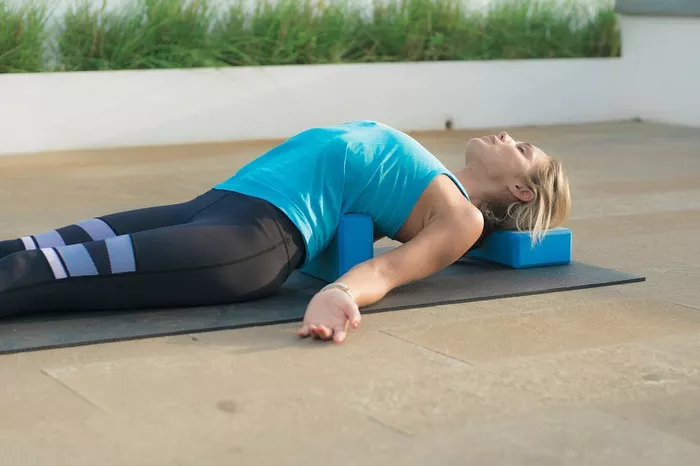Yoga pants have become a staple in many wardrobes, not just for yoga practice but for everyday comfort and style. However, one common question arises: what kind of underwear should you wear with yoga pants? The right choice can enhance your comfort, maintain hygiene, and ensure you look your best. This article explores various options, considerations, and tips for choosing the perfect underwear to pair with yoga pants.
Importance of Choosing the Right Underwear
Selecting the right underwear for yoga pants is crucial for several reasons:
- Comfort: Yoga involves a wide range of movements, so comfort is paramount. The wrong underwear can cause discomfort, chafing, or restriction of movement.
- Hygiene: Proper underwear helps manage sweat and maintain cleanliness, crucial during physical activity.
- Appearance: Visible panty lines (VPL) can be distracting and may detract from your sleek yoga pant look.
Types of Underwear Suitable for Yoga Pants
Several types of underwear can be paired with yoga pants, each offering different benefits. Here are some popular options:
1. Thongs
Pros:
- No Visible Panty Lines: Thongs are known for their minimal fabric, making them less likely to show lines through tight yoga pants.
- Comfort: Modern thongs are designed with comfort in mind, using soft, stretchy fabrics.
Cons:
- Adjustability: Some people may find thongs uncomfortable or need time to get used to them.
- Hygiene: Thongs offer less coverage, which might not be suitable for everyone in terms of hygiene.
2. Seamless Underwear
Pros:
- No VPL: Seamless designs ensure that there are no visible lines, maintaining a smooth appearance.
- Comfort: Made from stretchy, breathable materials, seamless underwear is typically very comfortable.
Cons:
- Durability: Some seamless underwear may not be as durable as traditional styles, especially after multiple washes.
- Fit: Ensure the fit is correct, as too tight seamless underwear can still create unwanted lines.
3. Boyshorts
Pros:
- Coverage: Boyshorts provide more coverage, which can enhance comfort and hygiene.
- Versatility: They can double as shorts for other activities, providing a two-in-one benefit.
Cons:
- Lines: Depending on the fit and fabric, boyshorts can sometimes show lines through yoga pants.
- Bulk: They may feel bulkier compared to other styles, which might not be ideal for all types of yoga.
4. Bikini Briefs
Pros:
- Comfort: Bikini briefs offer a balance between coverage and freedom of movement.
- Variety: Available in many styles and fabrics, they offer flexibility in choice.
Cons:
- Lines: Like boyshorts, some bikini briefs might show lines depending on their construction and the material of the yoga pants.
Fabric Choices: Comfort and Functionality
The fabric of your underwear is just as important as the style. Here are some common fabric options and their benefits:
1. Cotton
Pros:
- Breathability: Cotton is highly breathable, which helps in managing sweat and maintaining hygiene.
- Comfort: Soft and gentle on the skin, cotton is a comfortable choice.
Cons:
- Absorbency: Cotton absorbs moisture but does not wick it away, which can lead to discomfort during intense workouts.
2. Microfiber
Pros:
- Moisture-Wicking: Microfiber fabrics are excellent at wicking away moisture, keeping you dry.
- Softness: Microfiber is typically very soft and comfortable against the skin.
Cons:
- Durability: Depending on the quality, some microfiber underwear may not last as long as other materials.
3. Nylon/Spandex Blends
Pros:
- Stretch: These blends offer excellent stretch and recovery, making them ideal for activewear.
- No VPL: They often come in seamless designs, reducing the risk of visible lines.
Cons:
- Breathability: These fabrics are less breathable compared to natural fibers like cotton.
4. Bamboo
Pros:
- Eco-Friendly: Bamboo is a sustainable fabric option.
- Softness and Breathability: It is soft, breathable, and has natural moisture-wicking properties.
Cons:
- Cost: Bamboo underwear can be more expensive than other options.
Factors to Consider When Choosing Underwear for Yoga Pants
When selecting underwear to wear with yoga pants, consider the following factors:
1. Activity Level
Your level of activity during yoga practice will influence your choice of underwear. For high-intensity yoga sessions, moisture-wicking and breathable fabrics are essential to keep you comfortable.
2. Personal Comfort
Comfort is subjective and varies from person to person. Try different styles and fabrics to find what feels best for you during your practice.
3. Fit
Proper fit is crucial to avoid discomfort and visible lines. Underwear that is too tight can dig into your skin, while too loose can bunch up and create lines.
4. Yoga Pant Material
The material and fit of your yoga pants will also affect your choice. Tighter pants may require seamless or thong underwear to avoid lines, while looser pants may work well with boyshorts or bikini briefs.
See Also: What Material Are Yoga Pants Made Of?
Tips for Avoiding Visible Panty Lines
Visible panty lines can be a concern for many when wearing yoga pants. Here are some tips to avoid them:
1. Choose Seamless Designs
Seamless underwear is designed to be invisible under tight clothing. Look for styles specifically labeled as “no-show” or “seamless.”
2. Opt for Thinner Fabrics
Thinner fabrics are less likely to create visible lines. Avoid thick, bulky materials that can show through yoga pants.
3. Ensure Proper Fit
Well-fitting underwear is less likely to shift and create lines. Make sure your underwear fits snugly without being too tight.
4. Consider Color Matching
Choosing underwear in a color that closely matches your yoga pants can help minimize visibility. Nude tones are versatile and work well under most colors.
Caring for Your Underwear
Proper care can extend the life of your underwear and maintain their comfort and functionality. Here are some tips:
1. Follow Care Instructions
Always follow the care instructions on the label to avoid damaging the fabric and fit of your underwear.
2. Avoid Fabric Softeners
Fabric softeners can leave a residue that affects the moisture-wicking properties of certain fabrics. Avoid using them on microfiber, nylon, and spandex blends.
3. Air Dry
To maintain the elasticity and fit, air dry your underwear instead of using a dryer. Heat can damage elastic fibers over time.
Conclusion
Choosing the right underwear to wear with yoga pants is a personal decision that can significantly impact your comfort, hygiene, and appearance during your practice. By considering factors such as activity level, personal comfort, fit, and fabric, you can find the perfect pair that suits your needs. Whether you prefer thongs, seamless designs, boyshorts, or bikini briefs, the key is to prioritize comfort and functionality. With the right choice, you can focus on your yoga practice without any distractions or discomfort.
Related topics:



















